Japan Ranks at the Top of Life Expectancy Statistics
Japan is known for being one of the countries in the world where people live the longest. The country ranked number one in the world for both life expectancy and healthy life expectancy in 2019.
Life Expectancy at Birth and Healthy Life Expectancy at Birth, 2019[1]
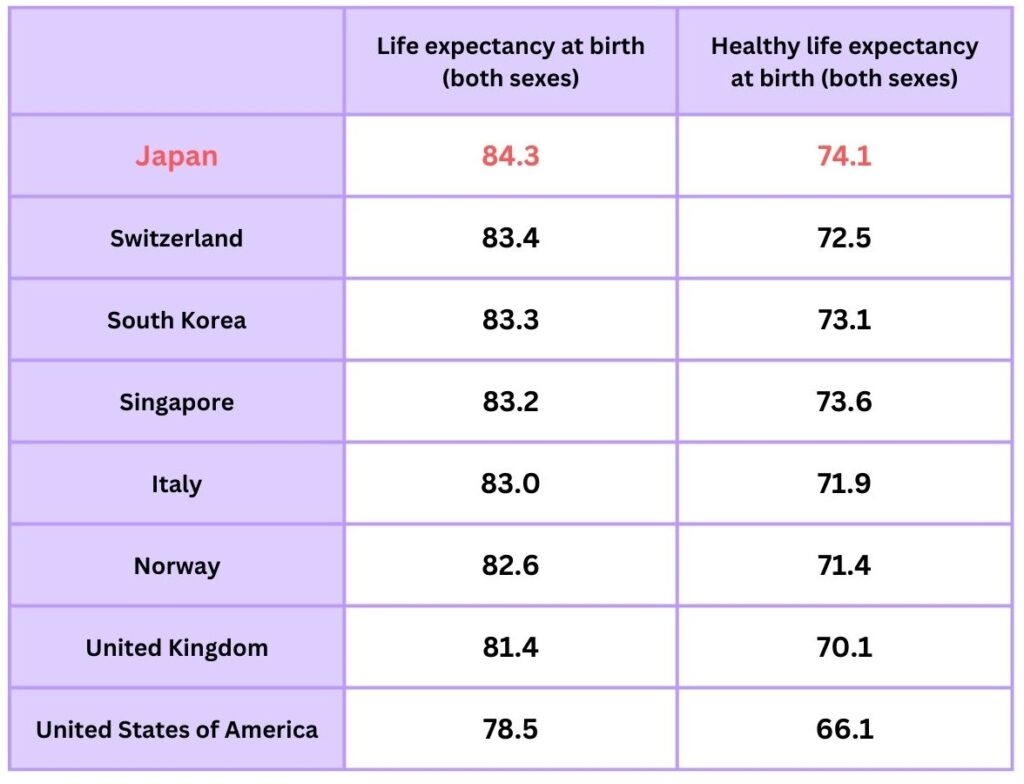
Has Japan Always Had Such Longevity? – No.
During World War II and until the 1960s, Japanese people had shorter lifespans than those in many developed countries. Malnutrition and infectious diseases such as tuberculosis were the major reasons for their shorter life expectancy back then.
With improved economy and hygiene, and the introduction of antibiotics, however, these issues were largely resolved. Then, Japanese longevity skyrocketed, outpacing that of people in other developed countries.
Trends of Life Expectancy at Birth[2]
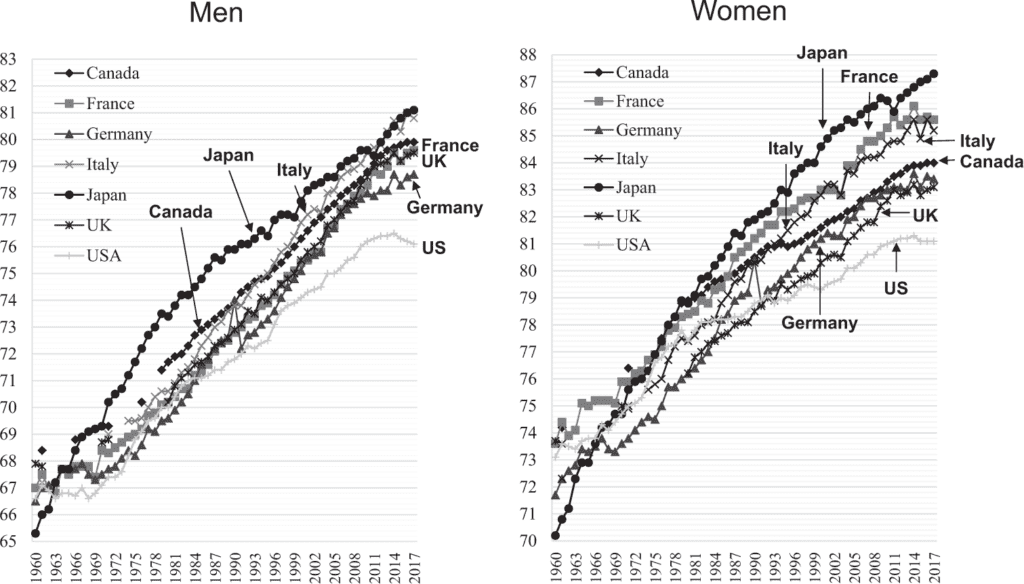
So what are the reasons behind their rapid increase in life expectancy? – Below are what I believe to be the top reasons, based on my research and experience of living in both Japan and the U.S.
Reason 1. Health Care
Japan’s health care system is widely accessible and affordable to the majority of people.
High Coverage by Public Health Insurance
Since 1961, Japan has had universal health insurance, where all people living in Japan are required by law to enroll in public health insurance. The public health insurance sets a 30% copayment (the actual amount required to pay) for people between the ages of 6-69. For people who are older, the copayment decreases to 20% or 10%.
Percentage of Copayment for Medical Expenses in Japan[3]

Japan also has a High Cost Medical Treatment System which sets a monthly limit for copayment. The monthly limit is determined based on the patient’s income and age, with lower limits for people with lower income and older age. This system is particularly helpful when a patient is undergoing expensive treatments and even the 30% copayment becomes unaffordable.
For example, an elderly person might only have to pay 40,000 yen (273 USD) for 10 million yen (68,413 USD) worth of medical services received in a month.[3] For dialysis patients who require long-term expensive treatments, the monthly limit for copayment is set to 10,000 yen (65 USD).
Because of this affordable system, people in Japan have been able to receive the medical care they need.
Medical Expense, Copayment, and Insurance Premium Per Person by Age Group (Annual Amount), 2020, Japan[4]
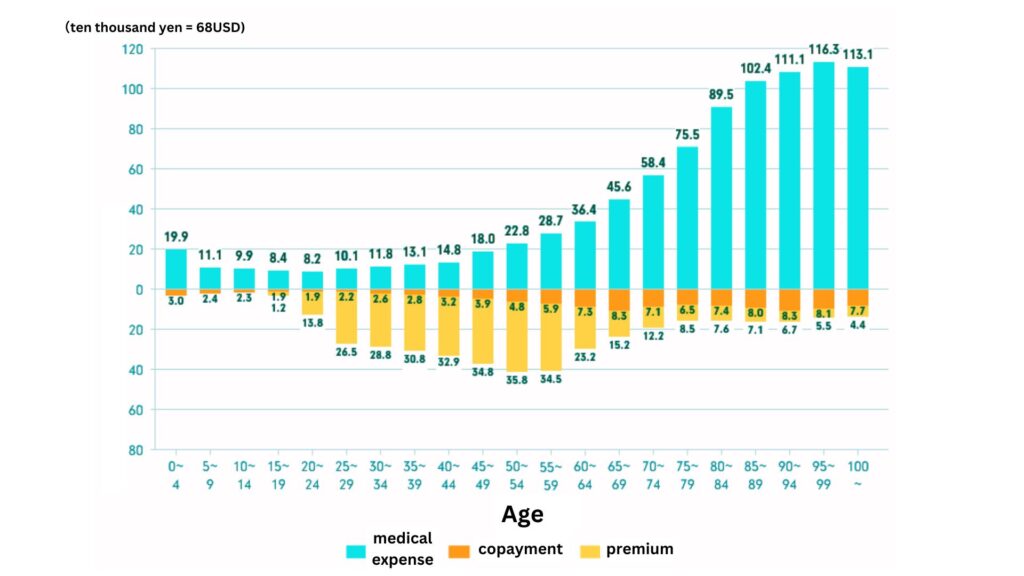
Free Ambulances
Transportation of patients by ambulance is free in Japan, so people don’t need to hesitate to call one in case of a medical emergency.

Regular Health Check-ups
Yearly health check-ups are mandatory in schools and workplaces in Japan. Nearly 70% of all Japanese people get a health check each year.[5] This practice promotes health awareness and early detection of diseases.

Reason 2. Low Obesity Rate
Obesity is highly correlated with chronic diseases such as heart disease, cancer, and diabetes. In Japan, however, the obesity rate is low. People are generally slim, and you rarely see overweight individuals in this country. The low obesity rate has contributed to the prevention of chronic diseases to a great extent.
Obesity Rate, 2022[6]
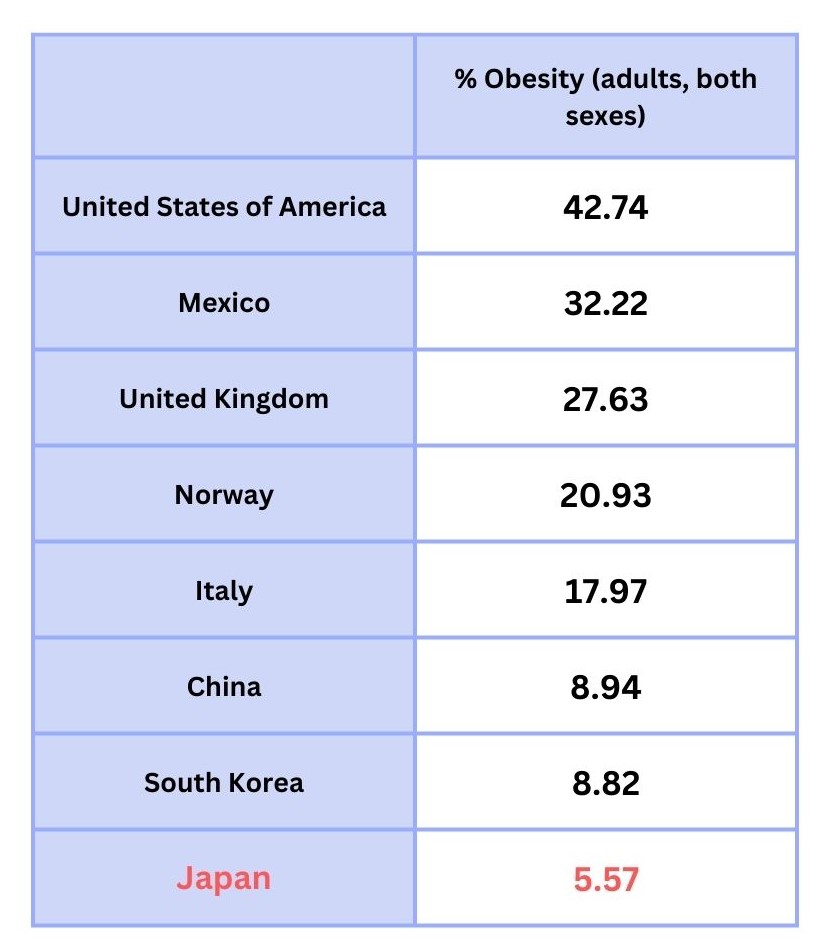
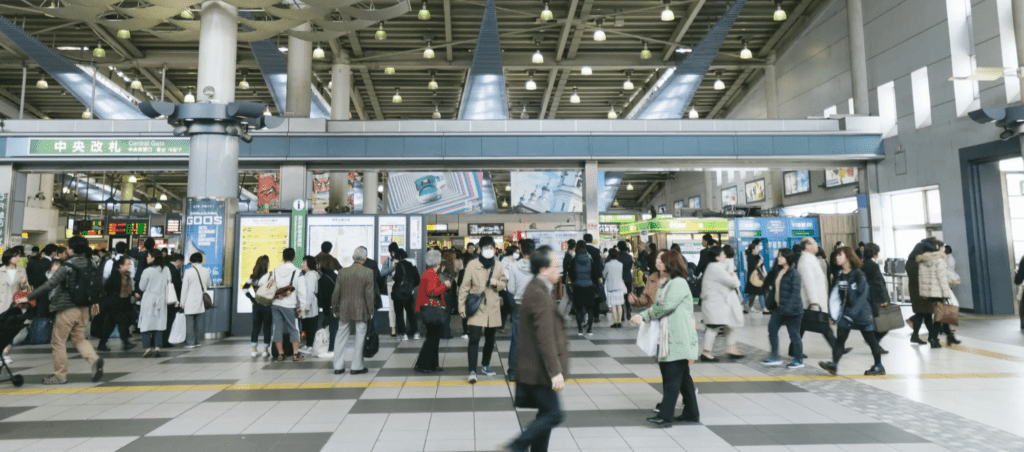
Reason 3. Food
There are some differences in what Japanese people eat and how they eat compared to people in other countries.
Less Processed Food
While ultra-processed foods such as potato chips, instant noodles, and fast food are sold in convenience stores and supermarkets in Japan, most Japanese people eat them sparingly, usually as snacks or occasional meals. They don’t rely on processed foods as their main diet.
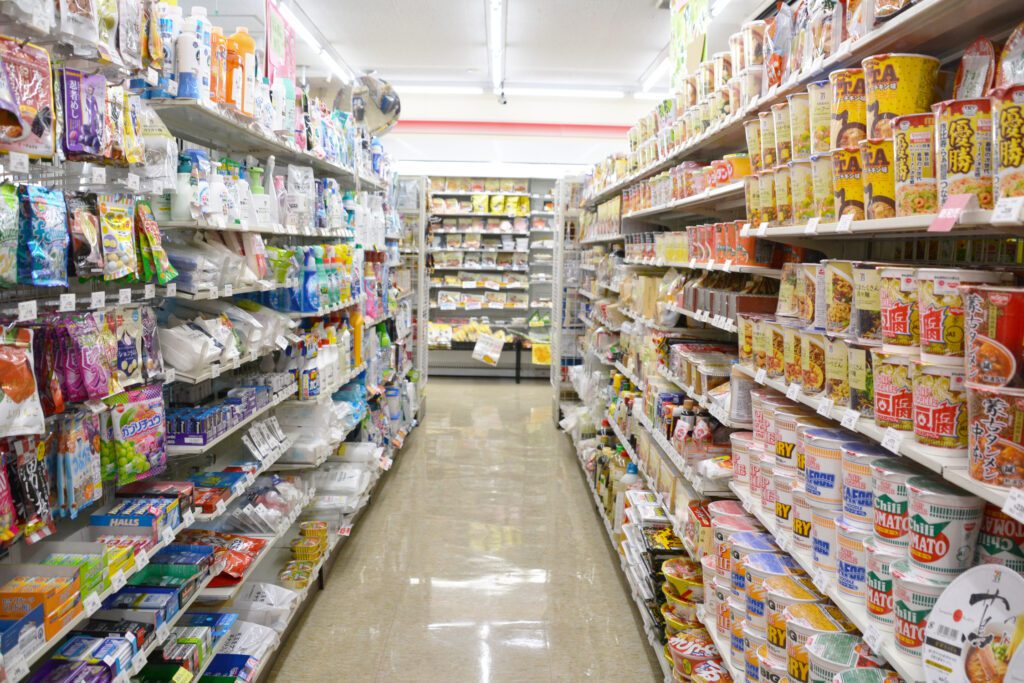
Most of the time, they eat whole foods, i.e., real food. Women in Japan usually cook for their families from scratch at home. People often bring homemade bento boxes to their workplaces for lunch.
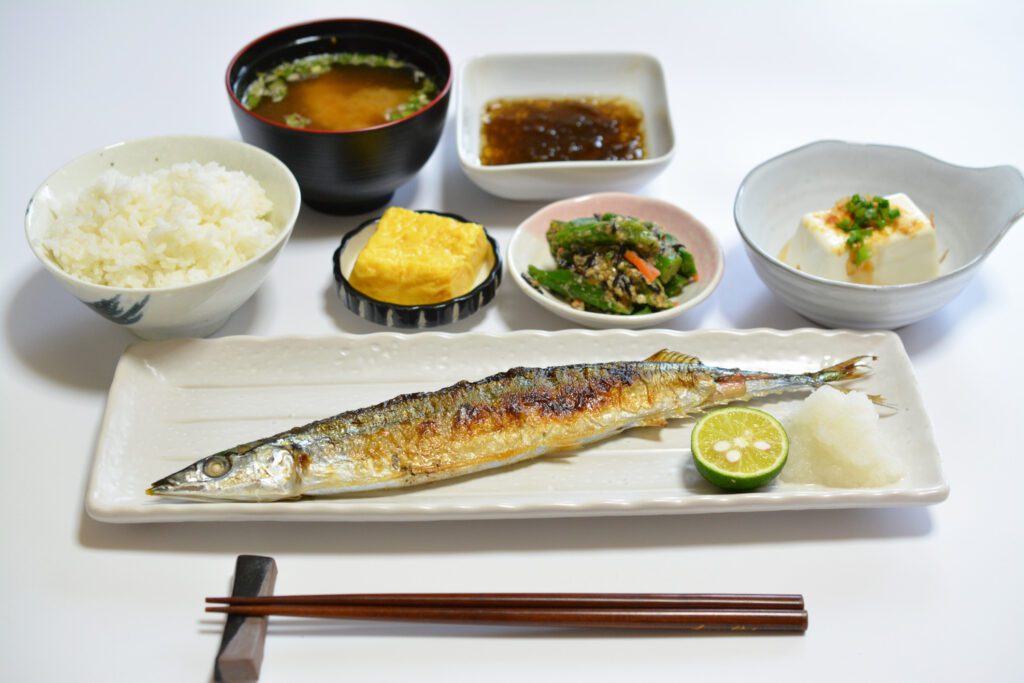
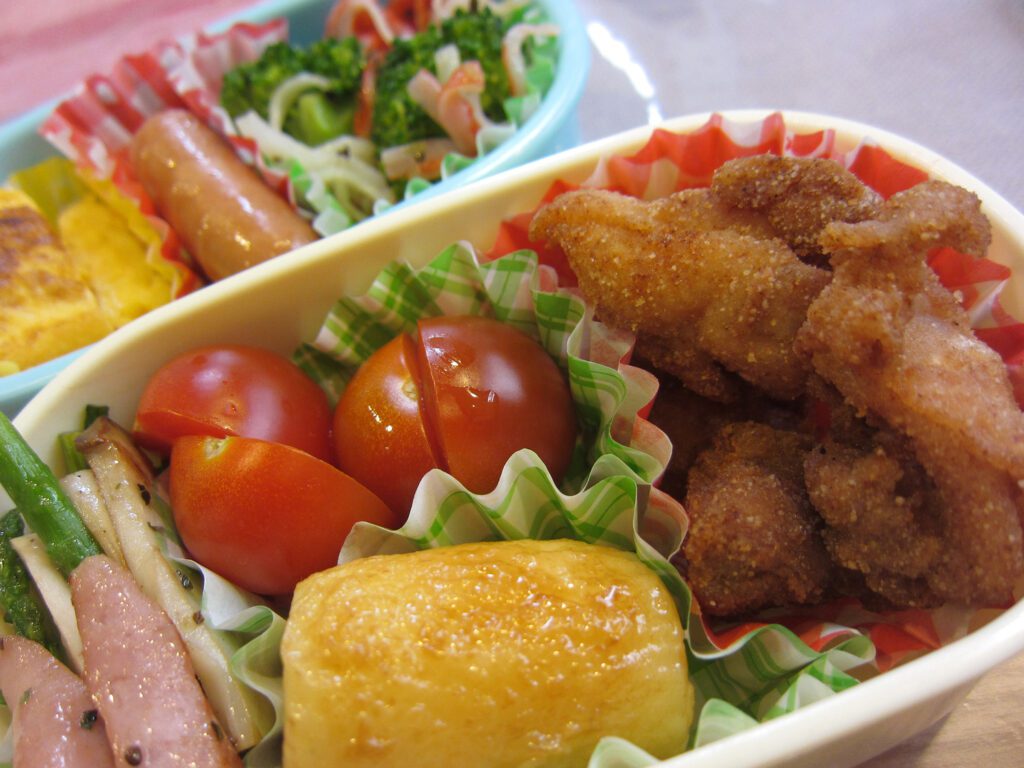
Supermarkets and some convenience stores provide a variety of ready-to-eat foods made from whole ingredients, making it easier for busy people to eat whole foods every day.
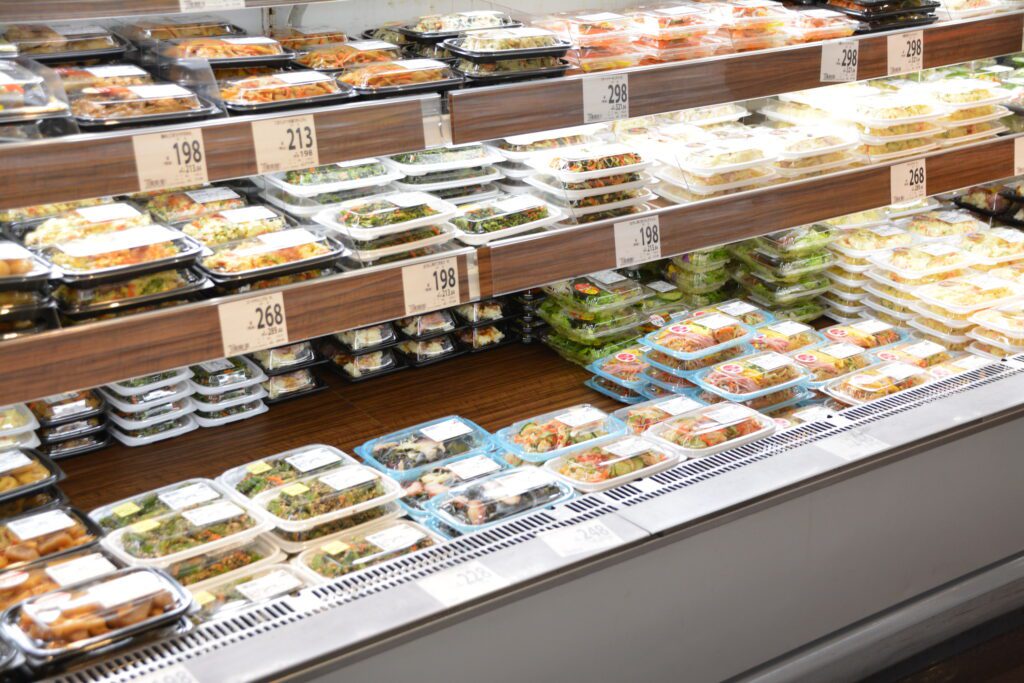
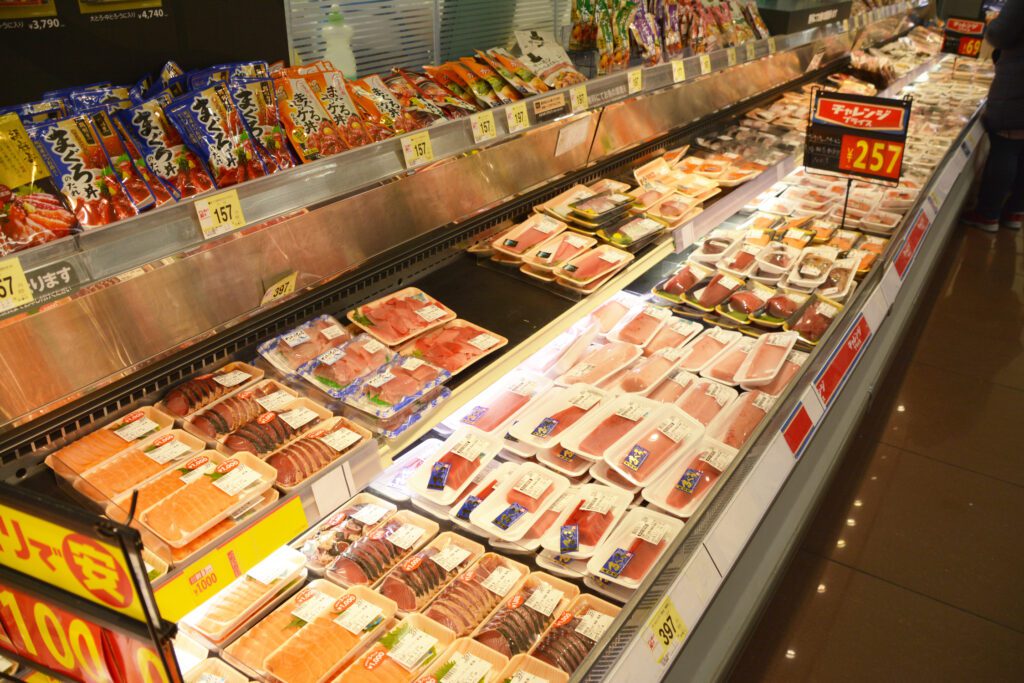
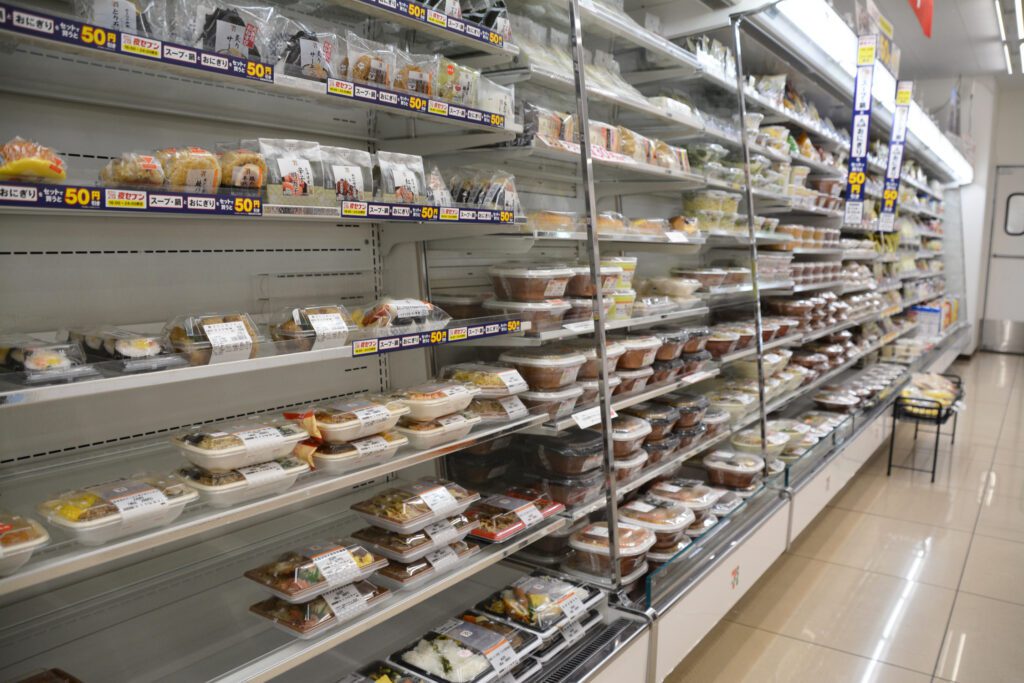
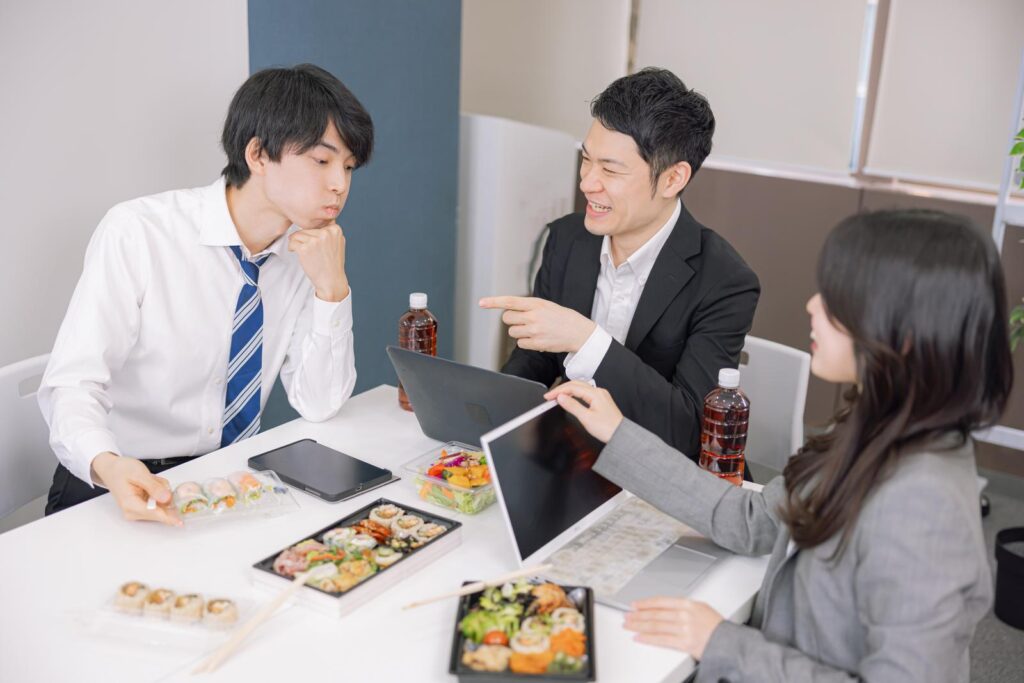
When going out for drinks after work with colleagues, Japanese people usually eat a more-or-less balanced menu consisting of items like edamame, fish, chicken, and eggs.

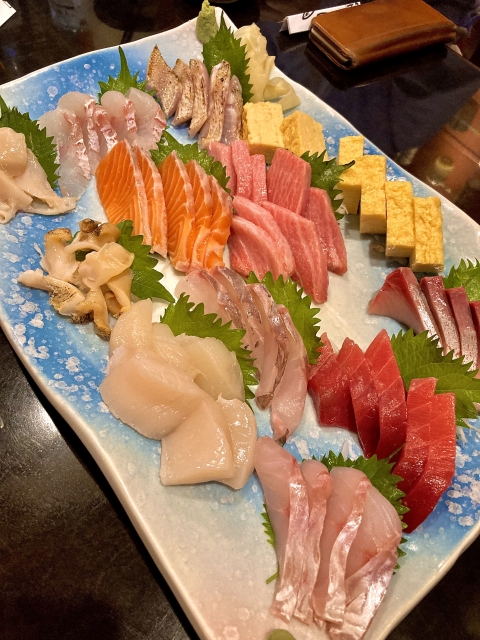
Many street foods, like yakitori and okonomiyaki, are also made with whole foods.

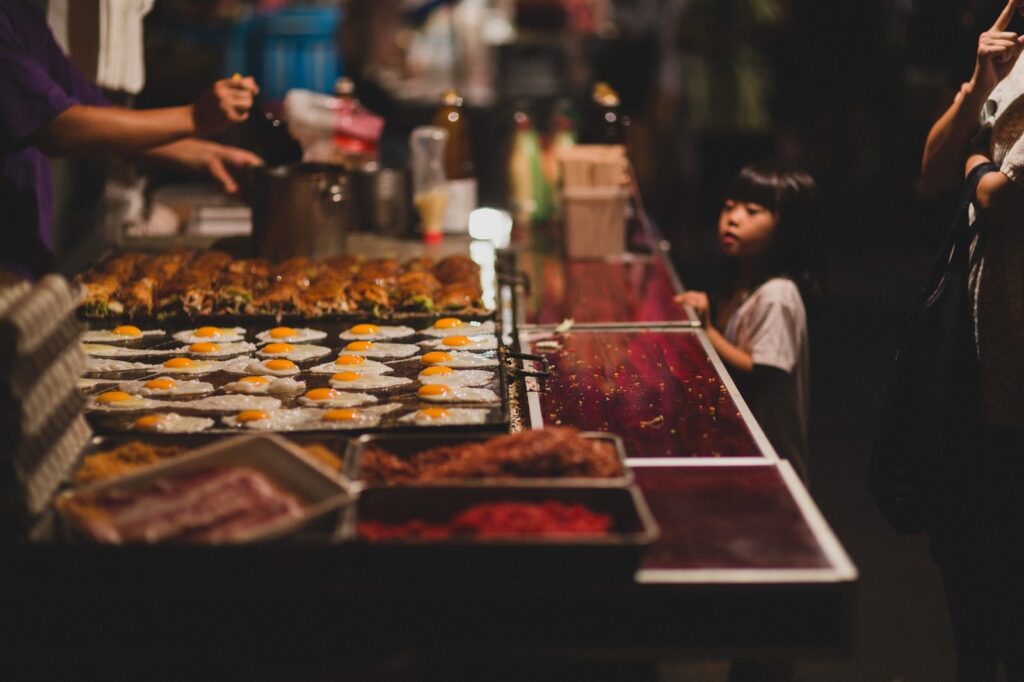
Small Portion Sizes
Japanese people eat in small portions. (I eat more than the average Japanese person.) They prepare small amounts of food at home, and the foods available at restaurants, supermarkets, and convenience stores are also in small portions.
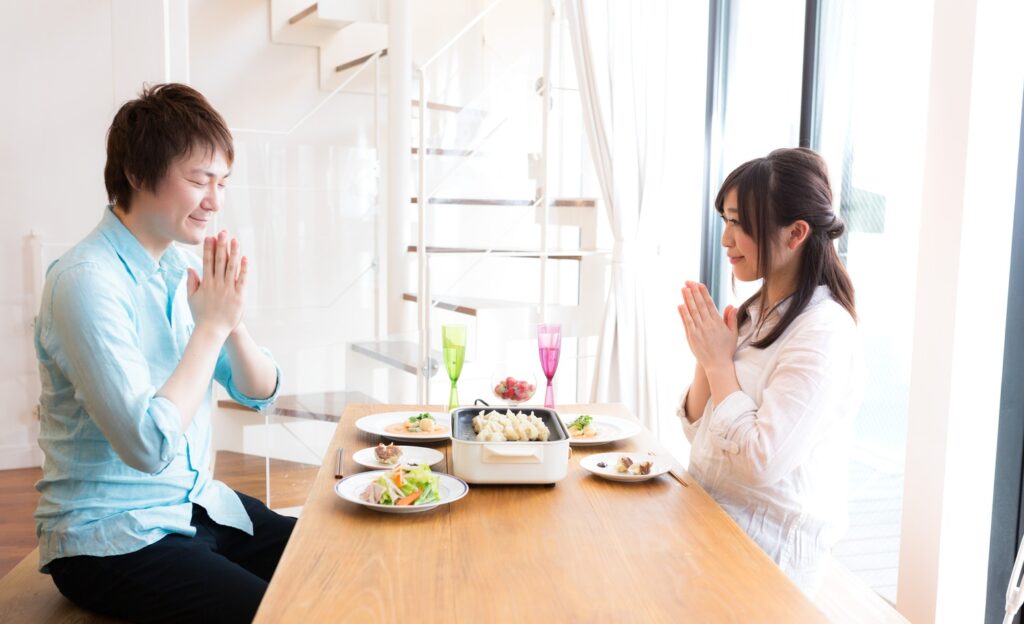
Smaller portion sizes have helped keep the obesity rate low in this country. Even when they eat unhealthy food, the effects on their health are not as significant because they don’t eat large portions.

Low in Fat
Japanese foods typically don’t use a lot of oils and fatty ingredients. Thus, the Japanese diet tends to be lower in fat.
While less fat is not necessarily healthier, in the modern world where excessive energy intake is a major issue, this low-fat diet culture is believed to be one of the major contributors to the lower obesity rate and longer longevity in Japan.[9][10]
Daily Fat Intake Per Person, 2017[7]
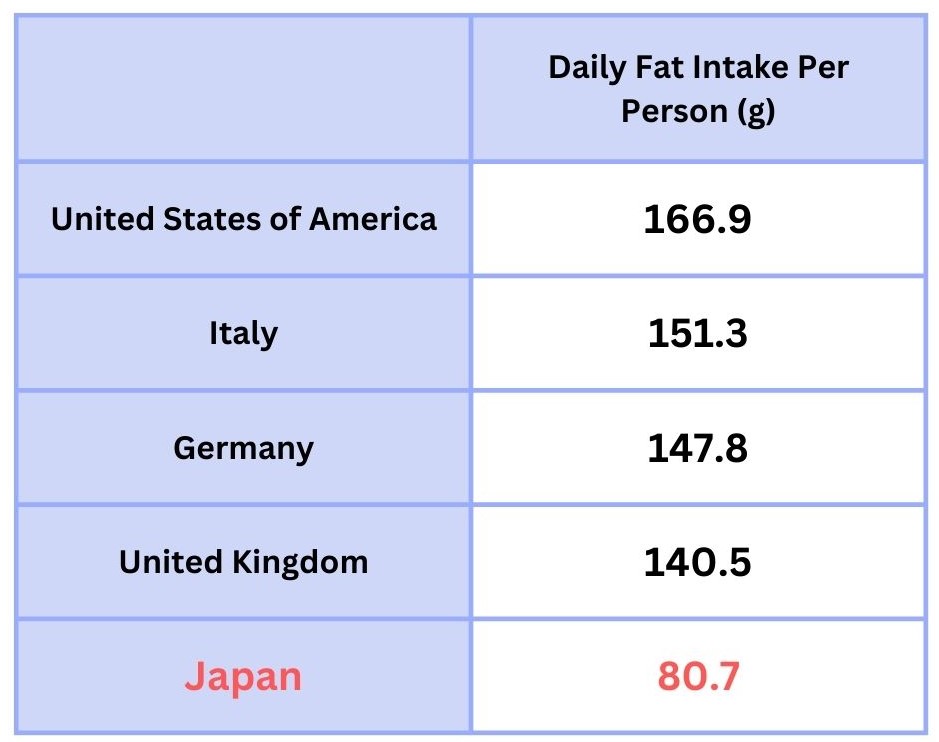
High Fish and Soybean Consumption
Traditionally, the Japanese were not meat eaters. Fish and soybeans were their main sources of protein. Although they now also eat other protein sources such as chicken, pork, and beef, they still consume fish and soy products regularly. Fish provides high levels of omega-3 fats, while soy products like natto, miso, and tofu are low in net carbs and high in fiber. Many believe that the high consumption of fish and soy products has greatly contributed to the longevity of the Japanese people.[8][9][10]

Regular Consumption of Fermented Foods
Fermented foods such as natto, miso, Japanese pickles, and yogurt (yes, yogurt, too) are staples of the modern Japanese diet. These foods are sold in abundance at supermarkets and convenience stores, making them highly accessible. People eat them on a regular basis.
Regular consumption of fermented foods is crucial for gut health and maintaining overall health.
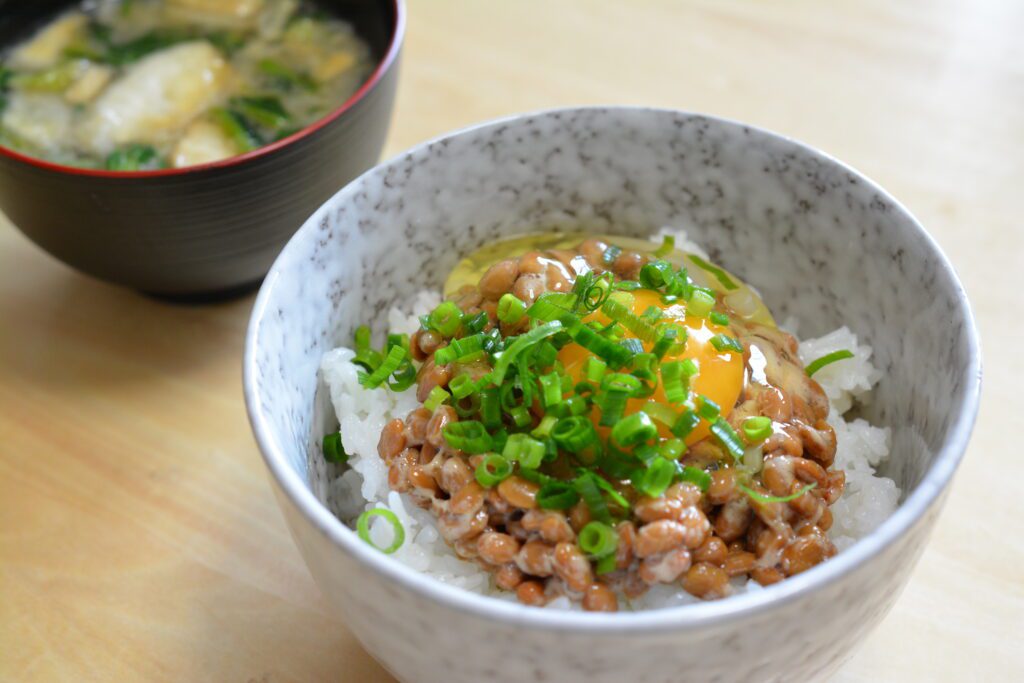
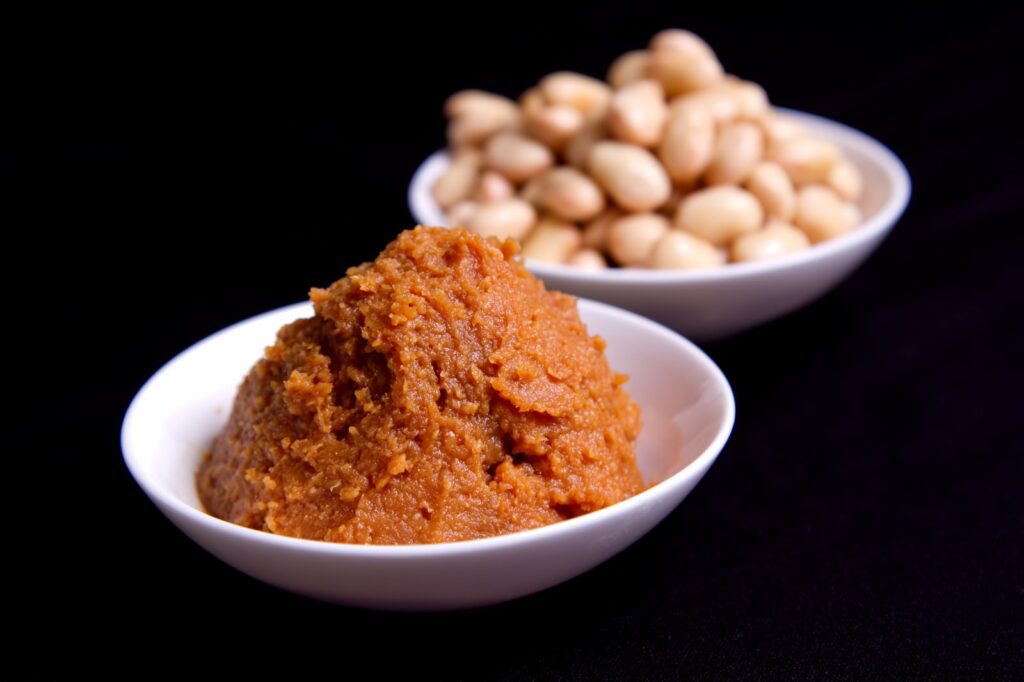
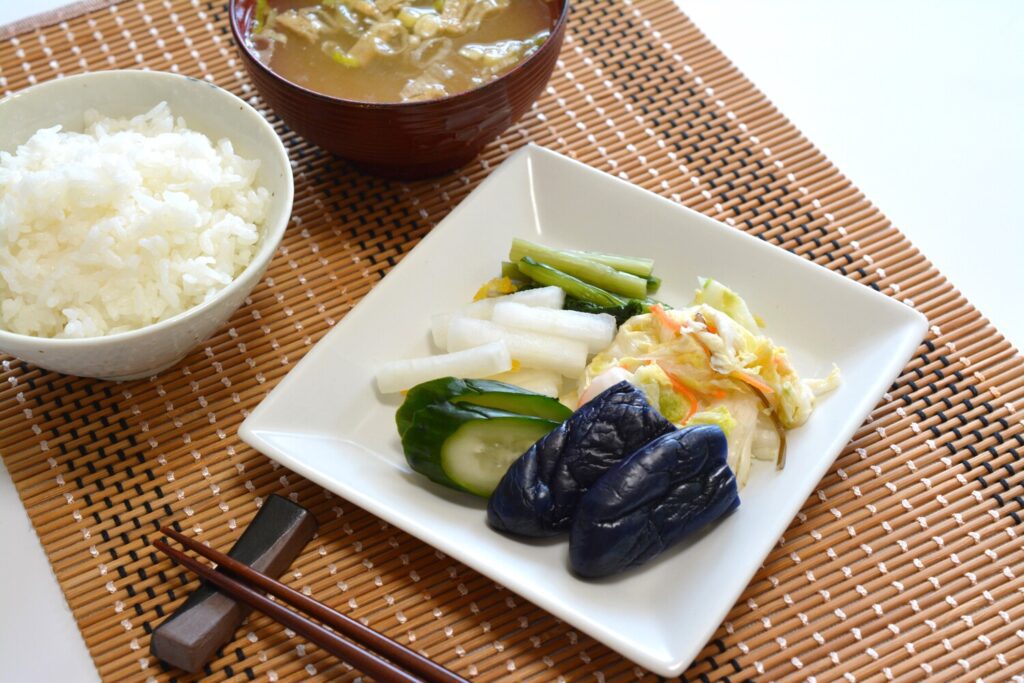

Is Japanese Food Exceptionally Healthy?
Do I think Japanese food is exceptionally healthy? Is there anything special about Japanese food that is strongly linked to longevity?
Honestly, I don’t think so. I think there should be more emphasis on protein and less on carbs such as rice, noodles, and breads.
As I mentioned earlier, I think the biggest contributor to health and longevity in the Japanese diet is the less consumption of processed food and the fact that people here eat whole food, the real food, every day.
And remember, people here get a lot of help from the medical system when they get any health problems so that certainly helps with their longevity too.
And things like fish and fermented foods are more like the icing on the cake that may have stretched the longevity of these people a little bit.
I think any cuisine can be perfectly healthy as long as the right ingredients are used.
Why Do the Japanese Still Eat Healthily?
Despite the proliferation of fast food restaurants and junk food in modern Japanese society, the Japanese seem to maintain relatively healthy eating habits. Why is this?
Having experienced schools in both Japan and the U.S., I believe that Japan’s school lunch program has played a significant role in preventing the widespread adoption of unhealthy eating habits.
Public elementary schools have been serving school lunches since 1951, and public junior high schools since 1956.[11] This means children eat school lunch every day for nine years.

The meals are made with whole foods from scratch, and the menu changes daily. The daily menu for Japanese school lunch is designed by school nutritionists with the goals of improving health through proper nutrition and promoting an understanding of healthy eating habits.
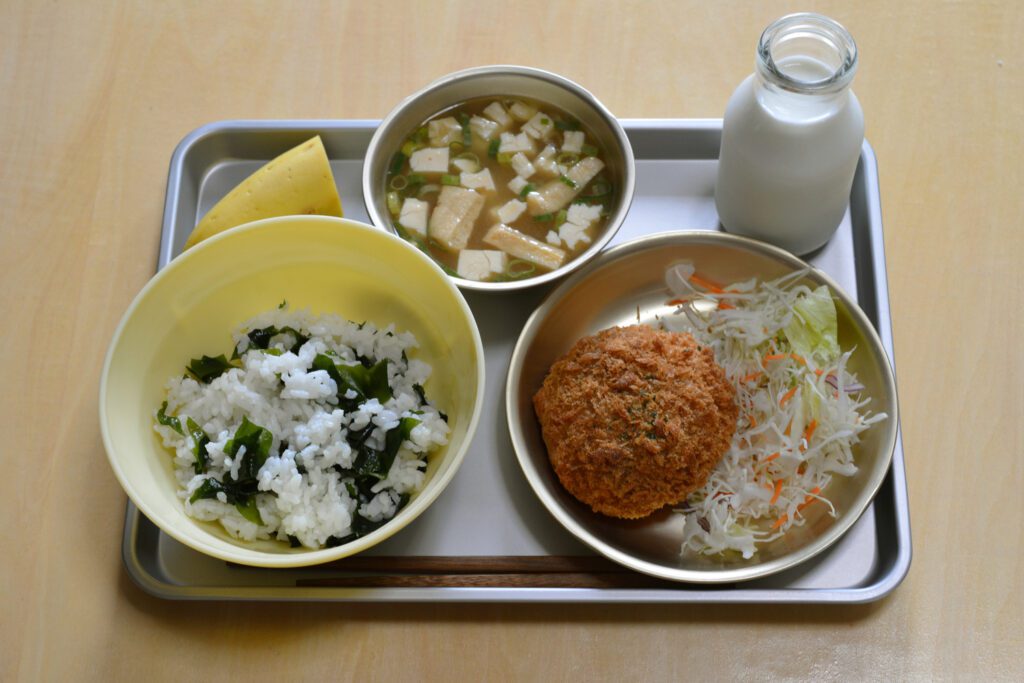
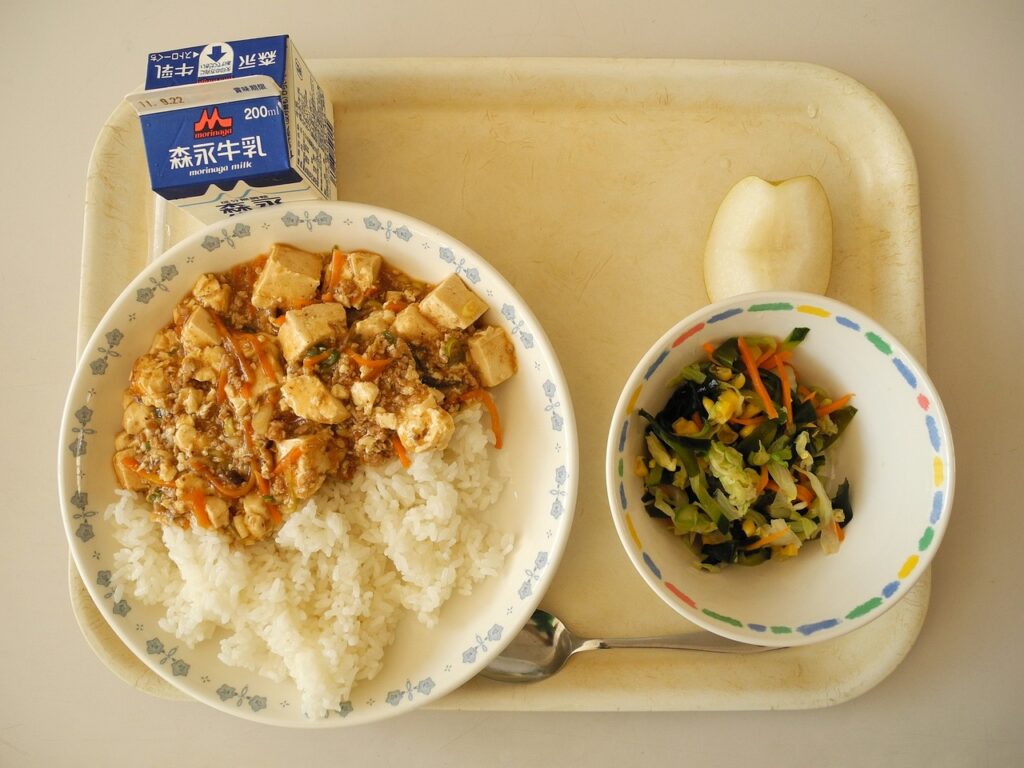
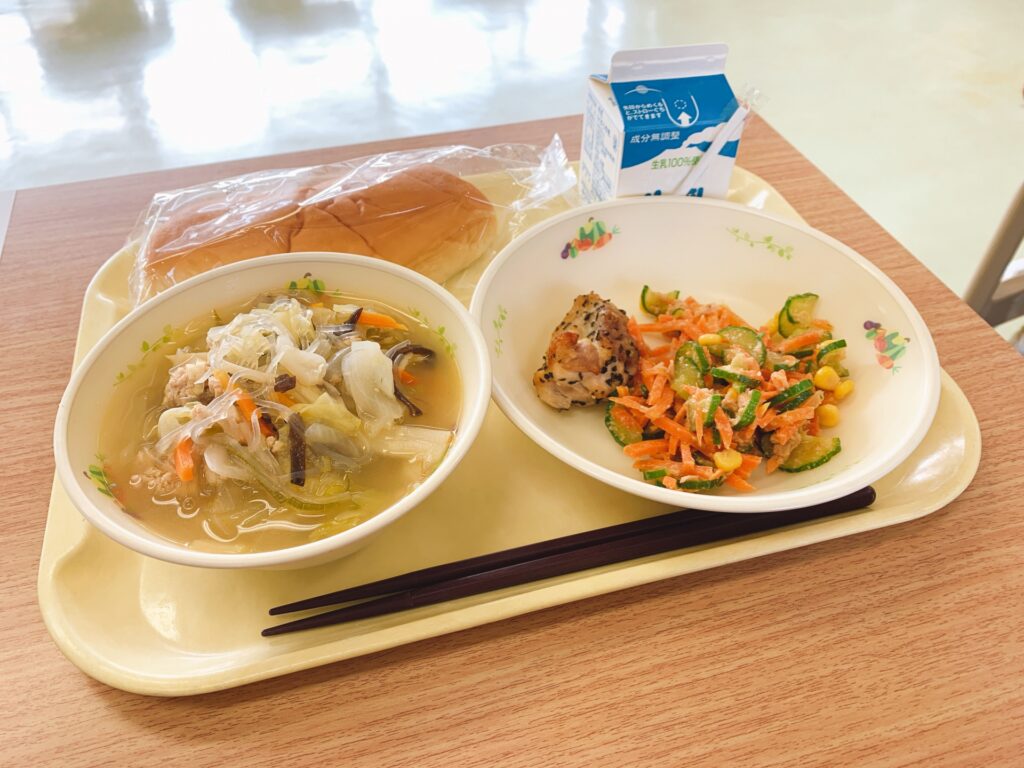
The exposure to good examples of healthy meals throughout childhood has shaped good eating habits that have persisted into adulthood. I think this is why the Japanese are less likely to rely on junk food despite its wide availability.
Resources
- https://www.who.int/publications/i/item/9789240074323
- https://www.nature.com/articles/s41430-020-0677-5
- https://www.mhlw.go.jp/bunya/iryouhoken/iryouhoken01/dl/01_eng.pdf
- https://www.mhlw.go.jp/content/nenrei_r02.pdf
- https://www.ipss.go.jp/ss-seikatsu/j/2022/SSPL2022_houkokusho/SSPL2022_houkokusho.pdf
- https://data.worldobesity.org/rankings/
- https://www.e-stat.go.jp/dbview?sid=0001906078
- https://journals.plos.org/plosone/article?id=10.1371/journal.pone.0176039
- https://www.ipss.go.jp/syoushika/bunken/data/pdf/19360404.pdf
- https://www.tyojyu.or.jp/net/kenkou-tyoju/tyojyu-shakai/nagaiki.html
- https://www.zenkyuren.jp/lunch/
Tokyo-based Japanese food enthusiast, sharing easy, low-carb recipes featuring Japanese staples like shio koji. I also explore the city’s dining scene through honest restaurant reviews and food adventures. Learn more at sakurayubi.com/about/


